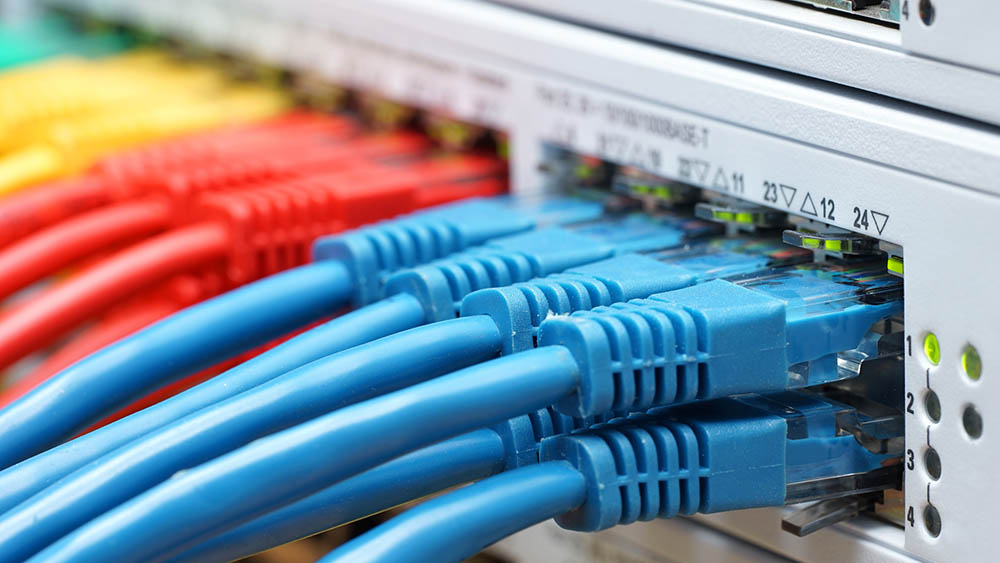The AV-over-IP movement started about 10 years ago when Google acquired YouTube, and ever since, the world has become obsessed with information. The demand for video is insatiable and still continues to flourish lavishly.
“YouTube is the pioneer of the AV-on-IP evolution. It’s in our daily workflow, and it’s where many of us go for knowledge when we need to learn on our own,” said Tom Nyhus, VP of engineering emerging technologies at IVCi. “As networks have become more affordable, there’s been a dramatic shift to streaming video over IP networks. We see it everywhere now: in enterprises, as well as in healthcare and education.”
From digital signage to wayfinding, videoconferencing, overflow in large and divisible spaces, broadcasting, and numerous other applications, IP-based deployments can provide significant benefits. But, to appreciate the impact of these advantages, it’s necessary to first review traditional AV methods.
Traditional AV: Control Protocols
In the past, each piece of equipment that required management from a control processor either relied on RS-232, RS-485, RS-422, or infrared protocols. For example, to control a videoconferencing unit or any other type of device (lights, shades, displays, switchers, etc.), an AV integrator would have to run a dedicated cable from the control processor to that specific piece of equipment to be able to manage it from a third-party controller (control processor). When using a dedicated control cable, an integrator would not only need this extra cable, but would also have to solder connectors to either side of it or make some other type of termination on the cable to link the two pieces of equipment.
Traditional AV: Audio and Video Signals
Transmitting audio and video signals required the same process as described above. Before IP technology, each source or destination device relied on dedicated cabling for the transmission of the audio and/or video signals between devices. Device connections varied, and again, technicians were required to either solder connectors on either end or use costly compression fittings that sometimes required special tools. This was a very time-consuming process for certain types of terminations and resulted in added costs.
When using the traditional AV method described above, at least three cables would be needed to control a display and also have audio and video go to it. This would also require the technician to pull three independent types of cables, terminate three different types of connectors, and then test each one individually. Not only does this cost more money, take more time, and limit the infrastructure, but it also makes it harder to maintain the system since there are multiple points of failure.
The Advantages of AV over IP
As IP-based technology advanced, the ability to control devices, send audio and video, and even power devices using a single Ethernet cable became possible. Here are three specific benefits that AV over IP provides:
1. Cost Effectiveness
A single Ethernet cable can now be used to power devices, send audio and video, and control a device. By only having to run one cable instead of multiple cables, there are significant savings in both materials and labor. Also, the IP connectors used to terminate these cables cost less and are much easier to terminate than the previous types that required soldering or compression fittings.
Maintenance costs drop dramatically when using IP technology since this deployment method reduces the points of failure. Therefore, troubleshooting is simplified and productivity increases.
By using power over Ethernet, electricity can be supplied to devices in remote locations where a receptacle isn’t available. In the past, an electrician would be required, and depending on the space, this could be extremely labor intensive and expensive. Now, it’s possible to run an Ethernet cable, which removes the hassles and extra costs associated with hiring a skilled trade professional.
2. Increased Functionality
Ethernet cables are capable of handling a much larger amount of data than serial cables. This results in significantly faster communication speeds. By using Ethernet, all devices on a single network can be integrated with advanced functionality. (However, this depends on the capabilities of the specific device.) Sophisticated encryption is yet another major advantage of using Ethernet. Also, by using IP control, devices can be managed from a centralized location. For example, if there’s a control processor in New York and an office in California, the devices can be manipulated through the shared network.
3. Improved Quality
Because IP allows more data to be passed over a single cable, the quality of the audio and video signals has also increased. So, now it’s possible to transmit HD and Ultra HD signals through IP-based products, as well as voice over IP.
These are just a few of the many benefits of deploying an IP-based solution. What are some of the unique advantages you’ve experienced deploying an AV-over-IP system?
Greg Aradjan is the programming and systems engineering manager for IVCi in Hauppauge, NY. He has more than 15 years of experience in the AV industry and carries a Crestron Master Programmer Silver Level Certification. With extensive experience with a wide range of manufacturers—including AMX, Biamp, Cisco, Crestron, Extron, Polycom, and others—Greg has successfully programmed countless projects within healthcare, corporate, government, and educational environments.
Diane Hagan is the marketing content specialist for IVCi in Hauppauge, NY. She has more than 20 years of experience in marketing communications.



